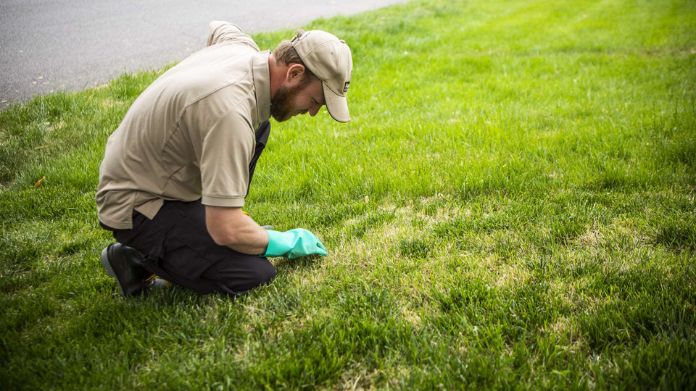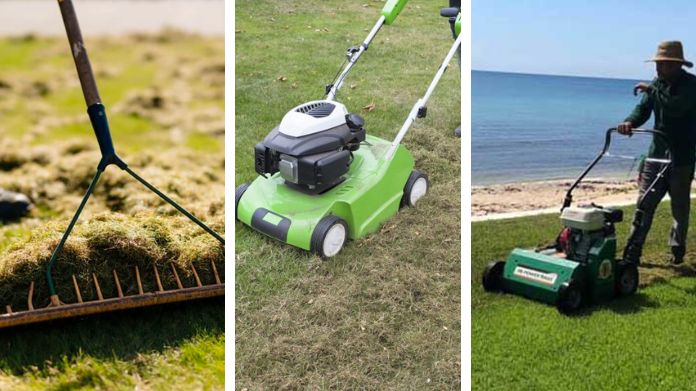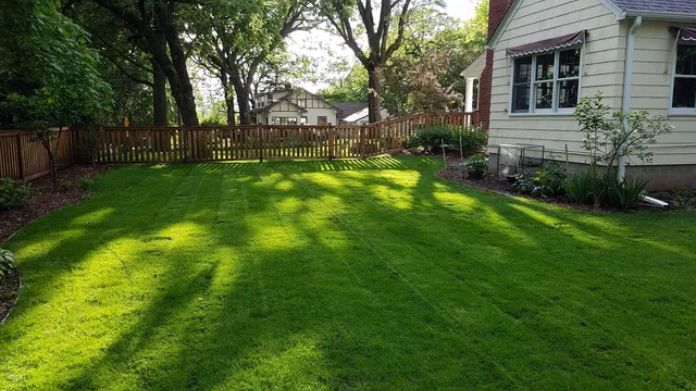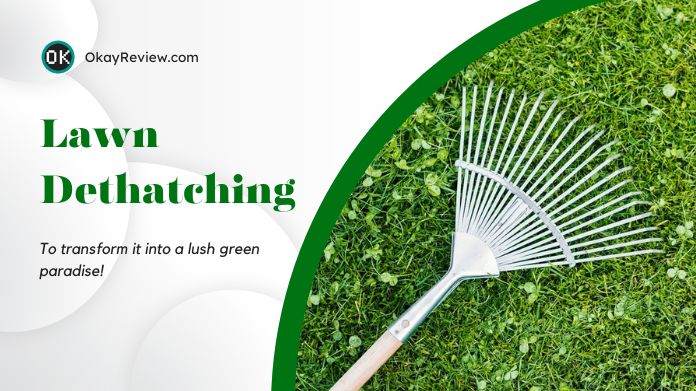Have you ever glanced at your formerly green lawn and wondered why it isn’t as brilliant as it once was? It might be time to investigate the realm of lawn dethatching.
But what exactly is dethatching, and how might it revitalize your green oasis? Join okayreview.com as we delve into the intricacies of lawn dethatching, from the ‘what’ and ‘why’ to the ‘how.’
Prepare to learn the keys to a healthier, more attractive lawn! 🌱🌼
Table of Contents
What is Lawn Dethatching?
Lawn dethatching is an essential part of keeping your lawn healthy and bright. It entails removing excess thatch and coating dead grass, dirt, and organic waste between the grass blades and the soil’s surface.
This thatch layer can become overly thick and dense, preventing essential nutrients, water, and air from reaching the soil.
Dethatching is simply a thorough lawn rake, revitalizing grass and preventing problems like dry areas and infections.
Refraining from removing troublesome thatch might jeopardize your lawn’s long-term health and vitality, and after that, remember to trim lawn borders using lawn edgers to enhance its looks.
Consider dethatching as part of your lawn maintenance routine to keep your property lush and flourishing.
Benefits of Lawn Dethatching
Dethatching is a fantastic remedy for lawns with much thatch. Deciding to dethatch your grass will.
- Improved Nutrient Absorption: By eliminating the thatch layer, your grass roots will have better access to nutrients, water, and air, resulting in stronger growth.
- Enhanced Air Circulation: Dethatching improves soil ventilation, limiting fungal growth and illness while boosting root development.
- Reduced Pest Habitat: Pests find it easy to hide in thatch. Dethatching eliminates this habitat, lowering the likelihood of infestations.
- Increased Fertilizer Efficiency: Fertilisers may reach the soil and grass roots without being obstructed by thatch, increasing their efficacy.
- Enhanced Water Absorption: Dethatching reduces water waste by preventing runoff and allowing your lawn to absorb moisture more efficiently.
- Healthier Grass: A dethatched lawn is more tolerant to stress and produces a healthier, lusher lawn.
- Better Aesthetic Appeal: Dethatching may convert a boring, lifeless lawn into a bright, eye-catching landscape, increasing the value of your home.
Why Lawn Dethatching is Important?
Dethatching is essential for keeping a healthy and vibrant lawn. Its importance is in reducing typical problems like compaction and excessive thatch accumulation.
Essential components can more efficiently access the root zone by eliminating thatch, the covering of dead grass, and debris that can build on the soil’s surface.
These components include air, water, and nutrients. It encourages healthy root growth and overall lawn life.
A heavy thatch layer can obstruct the flow of these critical supplies if not dethatched, resulting in issues like drought stress, disease susceptibility, and insect infestations.
Dethatching also improves drainage and minimizes soil compaction, creating a lush and resilient lawn.
How to Detach Your Lawn?
If you’re wondering how to dethatch your lawn, a straightforward answer is to hire a local lawn care professional.
It is especially true if your thatch layer is thicker than 2 inches since it may require more than one dethatching operation.
However, if you’re daring and want to do it yourself, a few DIY alternatives and equipment are available.
Step 1: Get Your Lawn Ready for Dethatching

Preparing your lawn for dethatching is critical to its success. What you must do is as follows:
- Choose a day when the earth is damp but not soggy. Two days before dethatching, properly water your lawn.
- If you’re using a machine, mark any shallow irrigation lines, utility lines, or sprinkler heads.
- Before dethatching, cut your lawn to half its standard height. If you hire a dethatching machine, ensure the settings are adjusted to your grass type, and avoid cutting deeper than half an inch into the soil.
Step 2: Make Use of the Proper Tools

- Manual Dethatching: You may physically remove thatch from your lawn using a specialized rake with curved blades. Manual dethatching rakes are ideal for dealing with light thatch problems and smaller grass spaces.
- Power Rakes: It looks like lawnmowers have revolving tines that pull thatch from the soil and gather it for disposal. They work best on lawns with minimal thatch and lawn that is robust enough to endure thorough raking.
- Vertical Mowers: Vertical mowers are suitable for lawns with much thatch. During rehabilitation, they cut through the thatch layer and into the soil, bringing the thatch and roots to the surface. Vertical mowers are perfect for removing deep thatch.
Step 3: Dethatch

Follow these techniques to dethatch your lawn successfully.
- Make sure the soil is moist but not soggy.
- Run the dethatching machine three times, switching directions each time. The consistency of the material volume churned out is critical.
- After dethatching, remove the thatch piles as soon as possible and consider planting for new growth.
- To further improve your lawn, consider topdressing, which may strengthen your current root system, resulting in a healthier and more vibrant lawn.
Our Thoughts
Are you ready to give your lawn the TLC it deserves now that you’ve learned what it is and how to do it? Remember that a healthy lawn is more than a pretty sight; it’s also a place for innumerable memories.
Roll up your sleeves, grab your dethatching rake, and let’s get your lawn prospering one thatch-free blade at a time.
Your lush sanctuary is waiting for you! 🌱🌞✨

